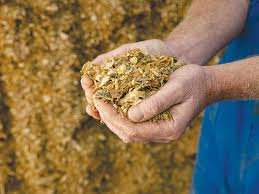
Overview
Dairy animals play a crucial role in the agricultural sector by providing milk, meat, and draft power for rural households. Managing a steady supply of fodder throughout the year is one of the biggest challenges farmers faces. Shrinking agricultural land, limited green fodder, and seasonal variations make it difficult to meet the nutritional needs of dairy animals. In this scenario, maize silage has proved to be the right solution, offering both storage convenience and nutritional benefits.
This article discusses the production, benefits, and challenges of maize silage in Pakistan and explains its role in modern livestock management.
What is Maize Silage?
Maize silage is a type of animal feed made by fermenting plants under airtight conditions. It is harvested at the dough stage, finely chopped into small pieces, and stored in wrapped bales, bunkers, or silos for the natural fermentation process to occur. This method keeps it fresh for many months.
Silage made from maize is rich in energy, starch, and digestible Fiber, making it an excellent feed option during specific seasons. However, it can be stored and used throughout the year. Because of its availability, maize silage has become an important part of modern animal farming in Pakistan and many other countries.
Farmers must store maize silage without loss of nutritional value. It is rich in digestible Fiber, energy and palatability. During extreme summer and winter, when feed shortages occur, stored maize silage ensures a steady supply of fodder, which makes it valuable and increasingly popular in Pakistan.
Importance of Maize Silage in Pakistan
Dairy animals are the backbone of the agricultural sector of Pakistan, contributing a major share to meat, milk, and rural livelihoods. The importance of maize silage in Pakistan is seen in multiple ways.
- Year-round feed supply: Traditional food crops like oats, sorghum, and berseem are seasonal and can’t provide continuous nutrition. Silage helps provide animals with good feed all year round.
- Support for the dairy sector: Pakistan is one of the top milk-producing countries in the world, but the yield per animal remains low. Silage offers animals more energy and digestible nutrients, which helps improve both milk production and quality.
- Efficient land use: Since farmers have limited land, they grow maize once, store it as silage, and use it as animal feed for the whole year, ensuring better use of their resources.
- Adoption in modern farming: On large dairy farms in Punjab and Sindh, farmers already grow maize and make silage a regular part of their feeding system. They set an example for medium- and small-scale farmers to follow.
- Reduced dependency on market fodder (commercial farming): By preparing and storing silage, farmers can avoid the high cost of buying fodder during feed shortage seasons.
Maize Silage Production in Pakistan
1- Selection of Crop
The first and most important step in silage making is the right choice of crop.
Farmers should pay attention to the following factors when choosing a crop for silage.:
- Variety of maize (Hybrid and dent-type maize varieties)
- Adaptability
- Disease resistance
- Maturity stage
2- Harvesting Stage
The harvesting time or stage is most critical factor in producing maize silage. I
- Determine the right harvest time
- Cut the entire plant
- Chop the plant
- Transport immediately
- Pack tightly
- Cover and seal
3- Chopping and Packing
Chopping Stage
- Cut into small pieces, typically 1–2 cm in length.
- Silage is more palatable and digestible for animals.
- Choppers or mechanical shredders are used for large-scale operations & Manual in small or medium-level farms
Packing Stage
- Move it to the storage site immediately after chopping.
- Tightly packed into silos, bunkers, or plastic-wrapped bales to remove as much air as possible.
- Proper packing is essential to create an anaerobic environment
4- Storage and Use
Storage:
Maize silage can be stored in silos, bunkers, or plastic-wrapped bales for 16-18 months. Farmers must ensure that the silage is tightly packed and well-sealed.
Use:
- Beef Cattle Feed
- Sheep and Goat Feed
- Year-Round Fodder Supply
- Cost-Effective Feeding
- Balanced Diet
- Supports Large-Scale Farming
Nutritional Value of Maize Silage
- High energy content
- Moderate protein
- Palatability
- Digestibility
Benefits of Maize Silage for Farmers
- Year-round availability of feed
- Reduced feed costs
- Improved milk and meat production
- Labor efficiency
- Waste reduction
Adoption of Maize Silage in Pakistan
It was adopted by only commercial and large dairy farms. Now, due to technology, small and low-level farmers are also aware of its growth or development process. Some key trends include:
- Silage entrepreneurs
- Government and NGO initiatives
- Awareness through training
Prospects of Maize Silage in Pakistan
- Silage cooperatives:
- Improved hybrids
- Commercialization
- Integration with feedlots
- Export potential

Muhammad Arif CEO, MBA in Finance and Marketing from South Korea University. 15 years plus experience in Agriculture Waste and Animal Feed Production, Facility Management & Export


